
Back in 2015, when Universal Pictures rebooted the Jurassic Park franchise with an entirely new concept, few insiders predicted that Jurassic World would wind up the top-grossing film of the year in terms of domestic box office — topping both a Star Wars movie and an Avengers sequel. What was certainly more predictable was the fact that there would be more Jurassic World films, culminating in Friday’s release of Jurassic World Dominion.
Director Colin Trevorrow was behind the resurrection of the Jurassic franchise, having directed both Jurassic World as well as Dominion. He also notably served as co-writer on all three entries in the trilogy and earned an executive producer credit on the latter two films.
Below the Line recently interviewed Trevorrow, who explained how Dominion came to be and Steven Spielberg‘s influence on the franchise finale, which has been performing well overseas and is expected to open to more than $130 million at the domestic box office, proving dinosaurs still roar pretty loud on the big screen.
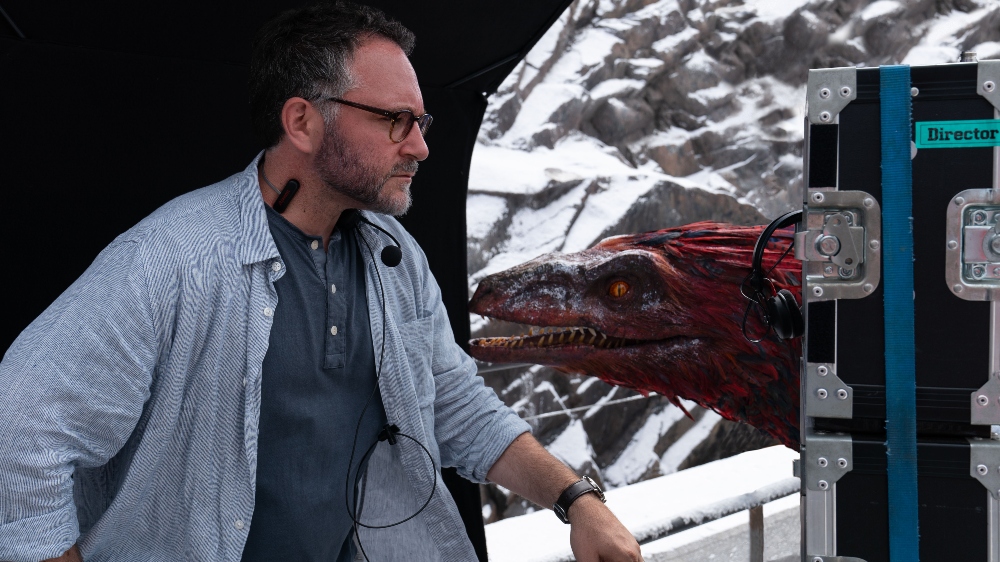
Below the Line: How early did you determine which dinosaurs were going to be practical versus digital?
Colin Trevorrow: We really just have a very simple rule: if it is possible to make it an animatronic, we do it. When I say “possible,” it means that it doesn’t have to run fast; it doesn’t fight anything; it isn’t a certain size. But even in this case, we made a Giganotosaurus head, neck, and torso, which was the biggest thing that I’ve ever worked with when it comes to animatronics. If a person needed to reached out and touch an animal, we would definitely make that an animatronic. Some were animatronics the whole time — the dilophosaurus, there’s never a digital version. Even when it’s running away, we took a tail and whipped it through the fern. Keeping the spirit of Jurassic Park alive, we did as many as we could.
BTL: Is it safe to say that there’s more animatronics used in this film than in the first Jurassic World film?
Trevorrow: There’s more animatronics on this than the last two Jurassic World movies combined — by a lot. It was entirely about resources. We had a certain budget on the first film; we weren’t sure if that was going to be a success or not. On the second film, we had the ability to make several more — J.A. Bayona totally embraced that. It’s really just directors making as many animatronics as they can be afforded.
BTL: On the first Jurassic Park, wasn’t it pretty even: digital versus practical dinosaur shots?
Trevorrow: That movie’s incredible in how few [total] dinosaur shot there are, let alone animatronic or digital shots. It’s probably about 50-50. In Jurassic World, we just had one [the dying Apatosaurus]. We did a whole scene about it. I was really excited that we had it there for the day. [In Fallen Kingdom], I would say probably six or seven were animatronic. J.A. built that massive T-Rex that they had in the container, and a full Blue [velociraptor] — I thought the Blue animatronic in the second one is honestly one of my favorites. I think it is amazing. [In Dominion], Blue is digital, and Beta is animatronic — the baby is animatronic as much as possible.
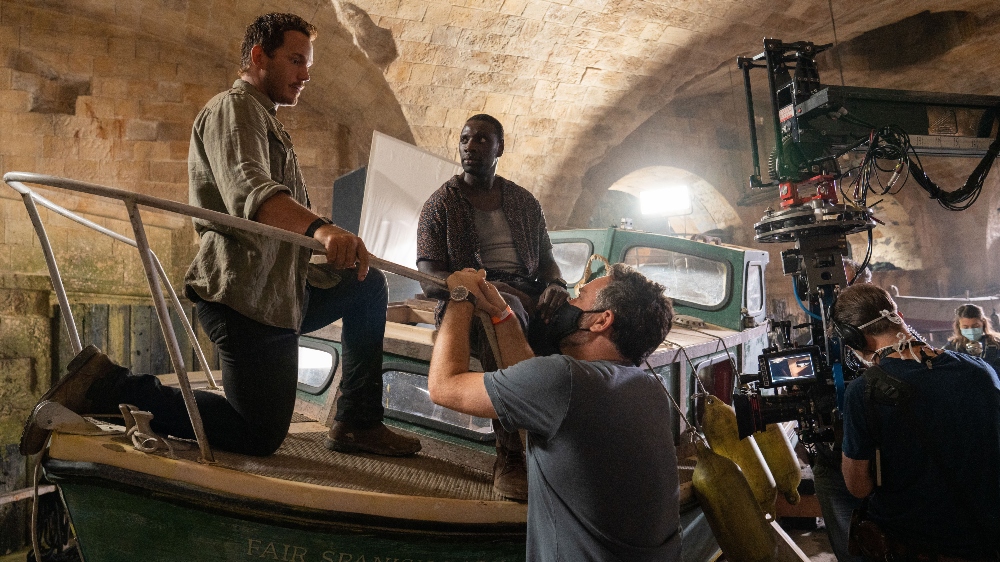
BTL: Is it easier to direct an animatronic dinosaur performance on a practical set versus a digital dinosaur performance that you can shape for months in post-production?
Trevorrow: It’s very natural because behind an animatronic is a human. You are really just talking to another performer, which is not that different from directing an actor, even though they have something between them and you. I would just look directly at the animatronic and direct it more like it was a kid; I would speak very simply and ask it to look in different directions and move its head in certain ways, and we would get a performance that I knew we could cut with and would give us every emotion that we would possibly need.
BTL: Did you let your imagination run wild when you co-wrote the story and screenplay for these three films?
Trevorrow: I built the story for all of them, and in doing that, in a lot of ways, it’s about restraint. Really, you’re just like a kid with a bunch of candy: “This dinosaur, and this dinosaur!” I think you can get super excited. To be able to pull back and also keep some in the tank — make sure that in the third movie, we were looking at something new. We kept feathered dinosaurs for this film; the Giganotosaurus. A lot of things that we could have thrown out earlier, we really wanted to be careful and thoughtful, and allow someone who’s seeing all of these movies for the first time to have a real experience.
BTL: When you were writing the story, did it occur to you to bring back the characters from the original Jurassic Park?
Trevorrow: Yes. Really more when we did the second and the third film together. In the first film, I didn’t know if anyone was going to like it, if it was going to be a success, so we made a very complete story. In the second and third film, they are very linked narratively. We plotted those out together, so we really knew what we were doing. I think it’s one of the loudest to tell a bit more of a complex story in the third one. People had a lot of what they needed to be able to understand where we were going. We had a lot going on.
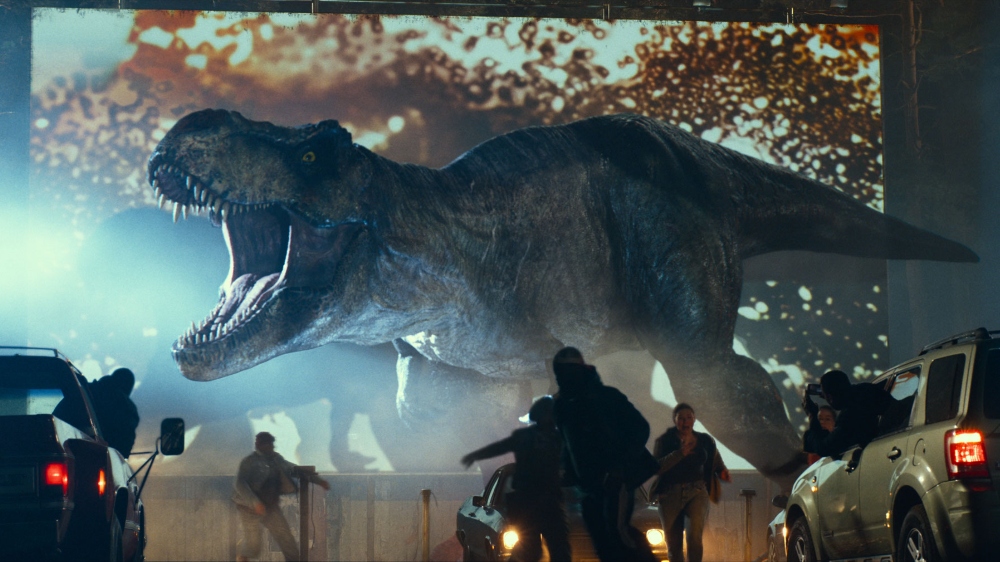
BTL: In developing the screenplay for the third film, did you always intend to bring everything together full circle from all the films, including the Jurassic Park trilogy?
Trevorrow: Yes. We said very early on, ‘The end of this movie is the end of one movie, three movies, and six movies.’ This film itself hopefully respects each of the movies equally. Maybe it leans into our Jurassic World movies a bit more because it’s that story. In Jurassic Park III, the relationship status in that movie plays a big part in Ellie [Laura Dern] and Grant’s [Sam Neill’s] story in this film. We really made sure that when you watch all six, you’re feeling like there [are] arcs in each one that land right here.
BTL: Was it especially difficult to direct this film given the challenges that come with dinosaurs?
Trevorrow: It’s most challenging in understanding how big they were when they’re not there, was the first thing that I ran into. We had this app — we could actually look through an iPad and it would show us the size and scale of a dinosaur at a certain distance from the camera, so we had a bit of a sense of it. It’s not Godzilla either. It’s 15-feet tall, 20-feet-tall. Finding a way to fit things that aren’t there into a space was challenging. On this film, because we had so many more animatronics, I actually was realizing how hard a job Steven had on the first film. There was a moment in this movie where all seven characters who are in the film at that moment are moving behind this jeep, and then there’s this giant animatronic [dinosaur] head beyond it. You are dealing with, ‘Who do I focus on in this scenario?’ You are still thinking as a filmmaker because it’s all right there in front of you. It made me realize how brilliant Steven’s work was in the first film — that he managed to do something no one had ever done before. He didn’t have any template for it, and he still did it better than any of us have ever done it, or will ever do it.
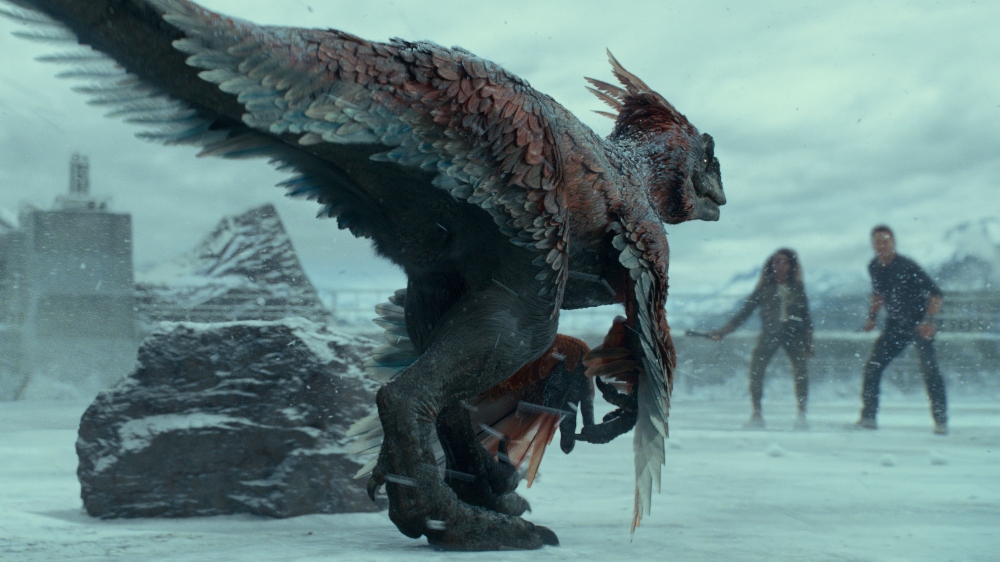
BTL: Did Spielberg have any input on what you were doing with this film?
Trevorrow: He did at the story stage. Because he’s a filmmaker, he’s respectful — as a producer — of [the] filmmakers that he’s working with. Once you make the film, he pretty much lets you go and make the movie. But in the script stage, he was very invested in making sure that Laura, Sam, and Jeff [Goldblum], their characters, were respected and honored and were taken care of in the best possible way. He also recognized the narrative challenge of this movie: having two parallel storylines that are driving towards a shared conclusion is not a traditional way to structure a mainstream blockbuster movie. We knew that; he knew that. To really dial into the script to make sure that everything connects and everything lands as best as it possibly can, that’s what he helped us focus on.
BTL: Is most of the crew of this movie new to the Jurassic World aspect of the franchise?
Trevorrow: Besides [cinematographer] John Schwartzman, who’s been on all three, there’s a couple of folks on the team [from other Jurassic films]. A lot of people who I worked with on Star Wars, came with me to this, and also on Fallen Kingdom, which we did at Pinewood [Studios in England] at the same time. To be able to, in those years, build up an extraordinary crew of people, all the way down to the animatronics; our production designer, Kevin Jenkins — it was pretty extraordinary to build an army.
BTL: Did any new crew members have pause about doing a dinosaur movie that has to fit into the world of the five Jurassic films?
Trevorrow: No — everybody was really excited that we weren’t just making another carbon copy of one of our movies. We were doing something totally new. When our artists came in, people who were building the 112 sets that we built, even the whole team making the animatronics, when they saw all of our art and saw what we were going to attempt, they were probably scared for us a little bit, but also inspired and thrilled — the ability to do something so completely fresh and unknown, I think, was exciting for them.
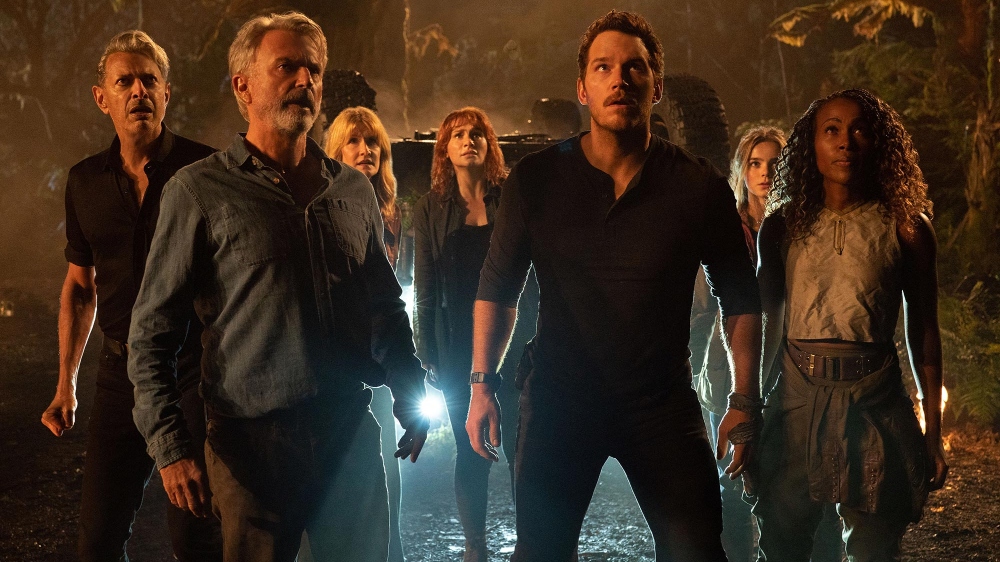
BTL: How closely did you work with David Vickery, your Visual Effects Supervisor, during, not only post-production but also during principal photography?
Trevorrow: Very close. This is our third time together. We worked on Fallen Kingdom together, and then he did Battle at Big Rock [a 2019 Jurassic short ], and now he did this. Our level is communication is on set every day, if there’s a dinosaur in the scene, and all the way through the editorial process, and all the way through visual effects. I probably interact with David the most out of anyone who isn’t a producer. Everybody else is only on the film for either post or production. He really stretches over everything. He’s with us in prep.
BTL: Was it a conscious choice when composer Michael Giacchino and you spotted a tiny bit of John Williams’ original theme from the original Jurassic Park score in Jurassic World Dominion?
Trevorrow: It was very important to us in all three of these movies that we made bold, new, original scores. Not that it’s easy, but it’s very attractive to be able to go and use some of the greatest music ever written for film throughout your movie, because it makes people feel a certain way. It’s something we pushed back against because we feel like we have a responsibility to make something new; that’s why we’re here. That’s what [Giacchino] wanted to be challenged to do. When we do bring the Williams in, it’s very, very carefully placed in a way that won’t feel thrown away. You’ll notice it every time — sometimes, it will just give you a feeling that you need to have in that moment. It’s so effective, that, I think, if it was over-used, it might not be as effective in the moments where we really need it.
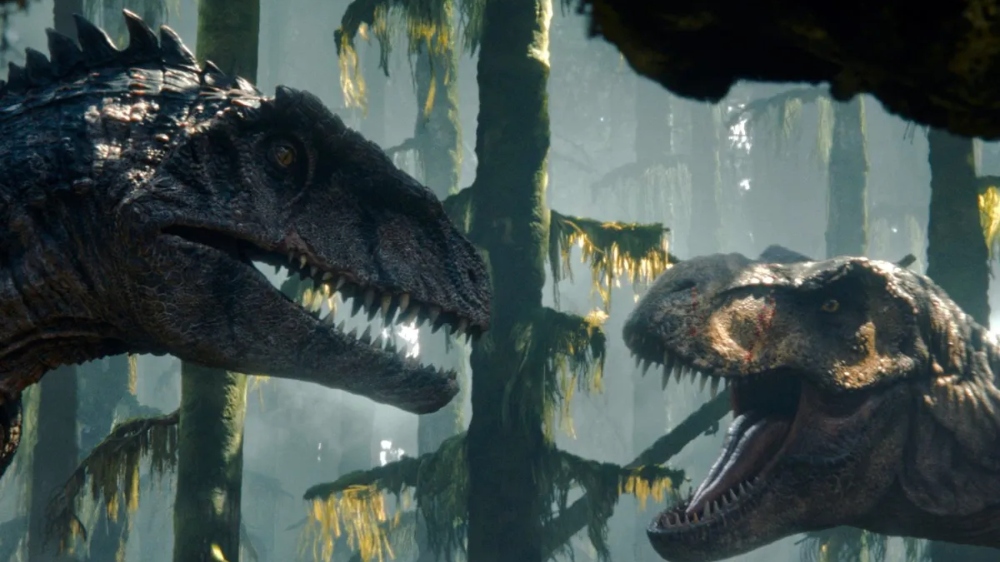
BTL: Do you foresee yourself directing projects as complicated as the Jurassic World films in your future career?
Trevorrow: I made another smaller film after Jurassic World [2017’s The Book of Henry]. It didn’t go great for me, but it was something I deeply loved. It was an incredible experience as a creative person and a filmmaker. It’s really hard to just decide I’m only going to do big franchise movies. I get so much satisfaction and joy out of making other kinds of films. For me, being able to produce movies by younger filmmakers — who maybe would be better authorities of those particular stories, to tell that story, than I would — is something I’m really interested in and is what I’m focusing on right now, more than anything. I probably, definitely, won’t be hopping into another franchise. I want to make original movies.
BTL: Is there a personal project you would like to see come to fruition at this juncture?
Trevorrow: When you have people who are achieving a certain thing within the world of franchises, and delivering on the needs of a franchise, and then convincing a studio to put real money behind something that’s original, are two completely different prospects. The same people who are successful over here will still struggle over there because of the way that movies are made and financed today. It’s a different world. That said, I’m still going to try. We’ve all got to try because it’s our job to tell original stories.
Jurassic World Dominion is now playing in theaters worldwide.





